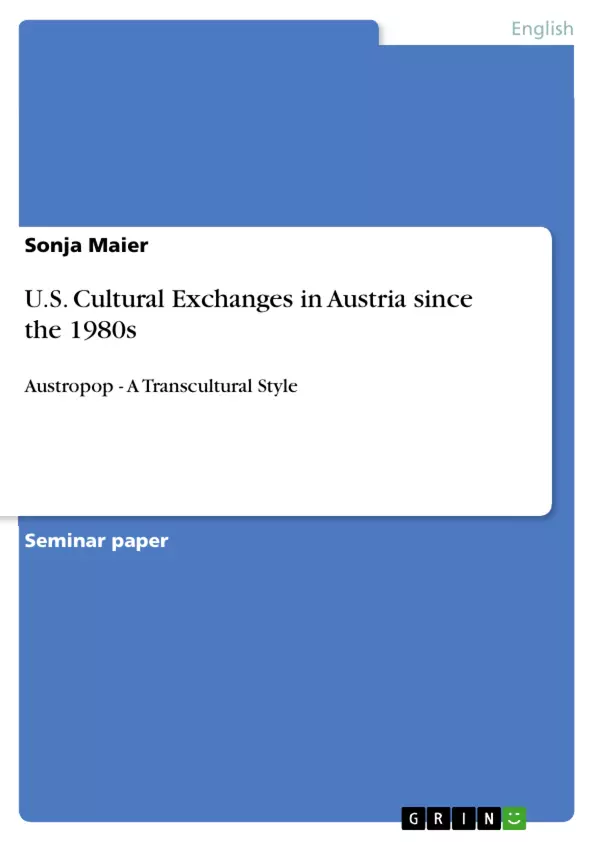In this paper, I have tried to describe what a cultural transformation can be, using Austropop as a specifically Austrian example. For that, I first have rethought articles by Erward Larkey, Richard Wagnleitner and Gerd Gemünden, who we have read and discussed in class. Their contributions and the critical class debates were necessary in order to understand cultural exchanges in a German speaking context. Going back in history and reconsidering the roots of certain developments can shed light on the reasons for their existence, as in the case of Austropop. Therefore, I have added a short history of Austropop that focuses more on the how and why than on its actors. In chapter three, I have analyzed a particular Austropop artist and compared him to his American 'counterpart' and pointed out the differences, similarities and especially novelties that came to life through a cultural exchange.
Inhaltsverzeichnis (Table of Contents)
- Introduction
- AustroPop - a transcultural style and a product of cultural contact
- The imaginary America - Cultural transformations linked to America
- Short History of Austropop
- An example of cultural translation
- The Boss of America - Bruce Springsteen
- Da Chef ausn Gemeindebau - Ostbahn-Kurti
- Fire vs. Feuer
- Conclusion
Zielsetzung und Themenschwerpunkte (Objectives and Key Themes)
This paper aims to explore cultural transformations through the lens of Austropop, a uniquely Austrian musical phenomenon. It delves into the origins of Austropop, analyzing its development as a transcultural style influenced by American popular music. The paper examines the process of cultural exchange and its impact on national identity.
- Cultural exchange and transformation
- Transcultural styles in music
- The influence of American popular culture on Austria
- Austropop as a representation of Austrian national identity
- The role of the consumer in cultural reception
Zusammenfassung der Kapitel (Chapter Summaries)
The introduction establishes the context of the paper and its central theme of cultural transformation. The paper explores the relationship between Austropop and American popular music, highlighting the process of cultural exchange and its impact on Austrian culture and national identity.
Chapter two focuses on the origins and development of Austropop as a transcultural style. It analyzes the influence of American popular music on Austria, tracing the evolution of Austropop through different phases of cultural adaptation and reception. Chapter two examines the role of the consumer in shaping and shaping cultural trends and the influence of the student protest movement on the early development of Austropop.
Chapter three delves into a specific example of cultural translation by comparing Bruce Springsteen, an American icon, with Ostbahn-Kurti, an Austrian musician. The chapter analyzes the similarities, differences, and novelties that emerge from the cultural exchange between these artists, illustrating how cultural borrowing and adaptation can give rise to unique and original styles. The chapter also examines the process of "de-anglicization" in Austropop, where imported musical styles are adapted to a local context.
Schlüsselwörter (Keywords)
This paper examines the key concepts of cultural transformation, transcultural styles, American influence, Austrian national identity, Austropop, consumer reception, and cultural adaptation. The paper utilizes the case study of Austropop to demonstrate how cultural exchange shapes the development of musical styles and influences cultural identity.
- Quote paper
- Sonja Maier (Author), 2009, U.S. Cultural Exchanges in Austria since the 1980s, Munich, GRIN Verlag, https://www.grin.com/document/150292



